Medical Care
During the Civil War, more soldiers died from disease and poor sanitary conditions than from battle. Measles, mumps, whooping cough, and dysentery were just a few of the diseases that regularly affected soldiers.
A 1908 Federal record of deaths of white Union soldiers from Tennessee indicated that out of 6,777 deaths, only 744 were from battle wounds. The others were:
| Dead of disease | 4,086 |
| Died as prisoner | 1,150 |
| Accidents | 375 |
| Other causes | 422 |
Doctors and nurses did not know about germs. They would move from patient to patient without washing their hands or instruments. They would even wet the thread in their mouths to make it easier to thread needles to sew up wounds.
Doctors thought that pus in a wound indicated that the body was healing, instead of being a sign of infection as we know today.
Doctors learned that if they could amputate or cut off a wounded arm or leg within 24 hours of the injury, they could save lives. Otherwise, the wound would become infected, followed by gangrene and death. Doctors didn’t know how to do blood transfusions at that time, so that any significant loss of blood would bring on shock and death.
Read about the battlefield hospital at Shiloh.
Doctors tried to keep the wounds clean of maggots (hatched from eggs laid by flies), as it horrified patients. But in 1863, doctors in a Confederate hospital in Chattanooga ran out of bandages and disinfectant and couldn’t change the patients’ bandages. Maggots multiplied in the patients’ wounds. Surgeons were surprised to dis-cover- the maggots ate only the dead tissue leaving a clean wound behind.
The war disrupted many private medical operations. Military hospitals were widespread, but were often set up hastily in any available building or field. Dr. Charles Todd Quintard , who served as a Confederate Chaplain in Tennessee, was also a surgeon, and was present at several Civil War battles.
Quintard observed at the Battle of Franklin how John McGavock’s estate was used as a both a hospital and holding place for the dead. He was also horrified by the number of amputations and the gruesome conditions of the facilities.
Quintard’s description of a field hospital
The practice of medicine changed dramatically during the course of the Civil War. Improvements were made in health and sanitation. Surgeon qualifications, nurse training, and transportation became better organized.
Dr. Samuel H. Stout, a native of Pulaski, Tennessee, began as a surgeon for the Third Tennessee Regiment. He was quickly promoted to medical director of Gordon Hospital in Nashville, the hospitals of Chattanooga, and eventually all those serving the entire Army of Tennessee. Stout improved hospital administration and saved more lives with better care.
Some Confederate armies were also equipped with dentists. Dr. James Baxter Bean of Washington County, Tennessee was one of the finest dental surgeons. He devised numerous procedures to treat facial gunshot wounds during battle.
Read more about medical care during the Civil War here.
Picture Credits:
- Photograph of a nurse at a Federal hospital in Nashville offering food to wounded and sick soldiers. Military Order of the Loyal Legion of the United States-Massachusetts and United States Army Military History Institute
- Photograph of a "surgeon performing amputation at a field hospial tent at Gettysburg, July 1863". The photograph looks like it was staged since there is a group of soldiers watching. Also the surgeon would have worn something to protect his clothing from blood. The woven leaves on the tent were decorations. National Archives
- Photograph of Confederate surgeon Samuel Gladney, M.D. The studio marking on one end is "Garvey Donaldson, Operator, 13 Gay St., Knoxville." Tennessee State Museum Collection, 2001.25
- Photograph is identified as a Confederate surgeon from Franklin. Tennessee State Museum Collection, 81.207
- Photograph of a field hospital at Savage Station, Virginia, after a battle. It is dated June 27, 1862. The photographer was James Gibson. Library of Congress
- Photograph of Charles Quintard as a young man. Not to be reproduced without written permission from the University of the South
-
A photograph of William Hunt, a surgeon with the 8th Tennessee Infantry, Union Army. Image number 200-049-010, Calvin M. McClung Historical Collection, Knox County Public Library
-
A hospital run by the Union army, identified as "General Hospital #15, Division 1, Nashville, 3/9/1865." The people in the yard and on the street are obviously posing for the photographer. Notice what looks like gallows in the yard. Tennessee State Library and Archives
Civil War and Reconstruction >> Civil War >> Soldiers Life >> Medical Care
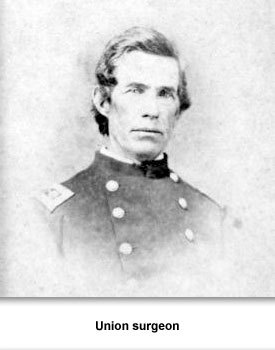
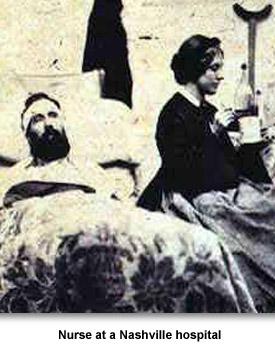
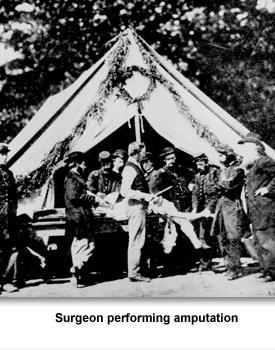
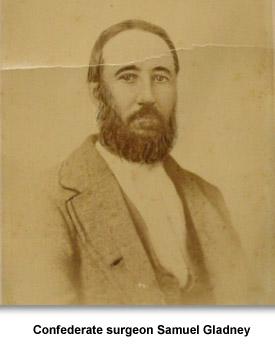
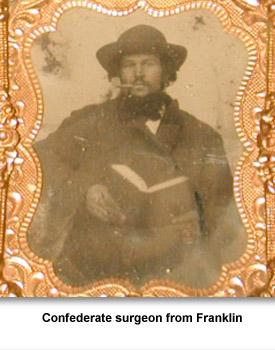
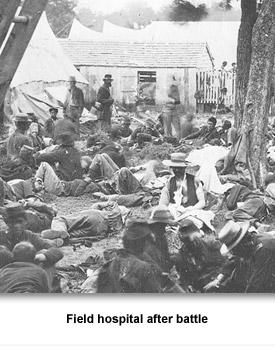
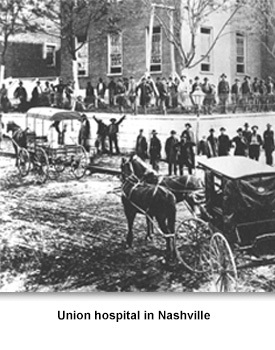
 Sponsored by: National Endowment for the Humanities
Sponsored by: National Endowment for the Humanities